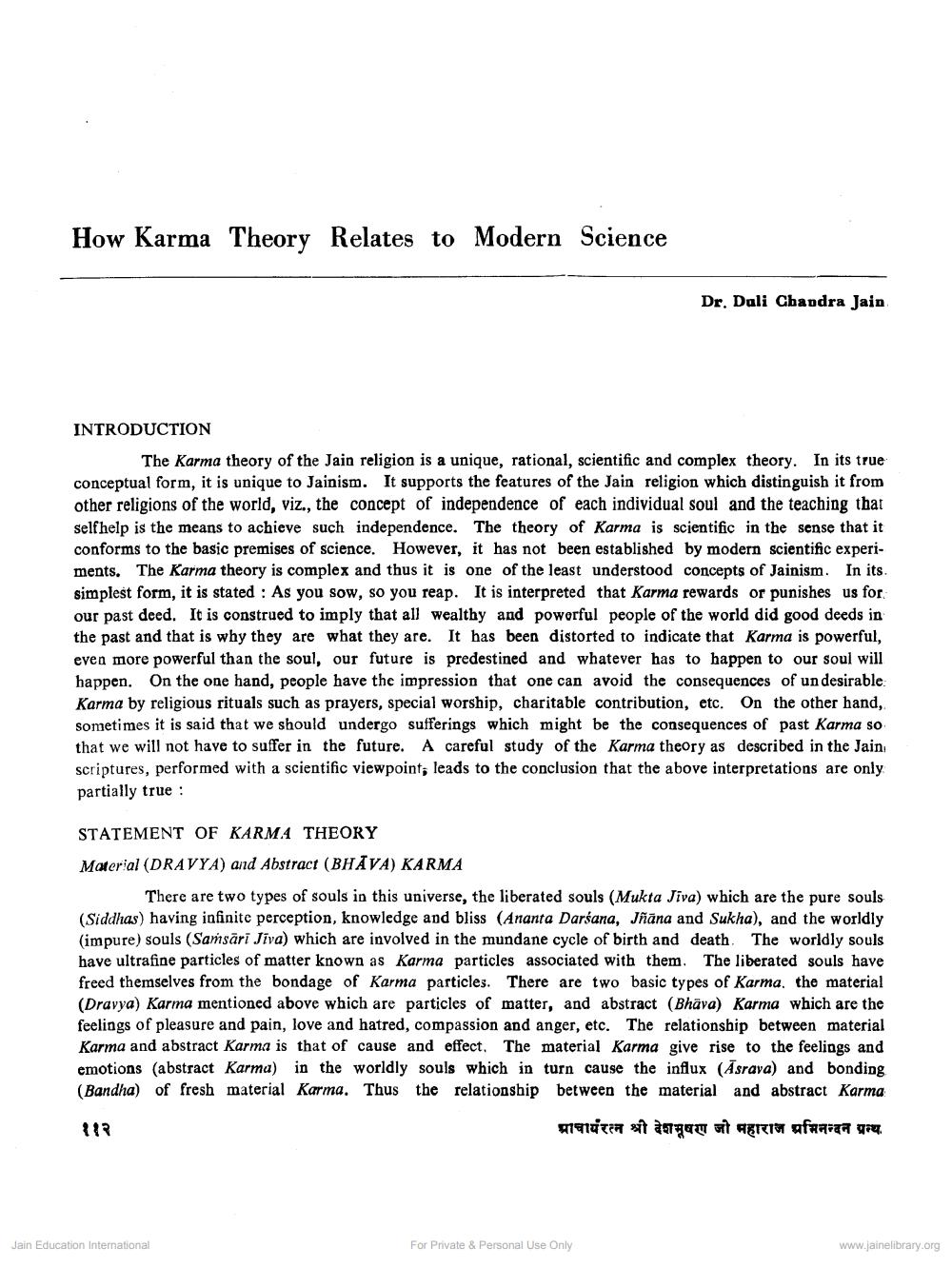Book Title: How Karma theory relates to Modern Science Author(s): Dulichand Jain Publisher: Z_Deshbhushanji_Maharaj_Abhinandan_Granth_012045.pdf View full book textPage 1
________________ How Karma Theory Relates to Modern Science INTRODUCTION The Karma theory of the Jain religion is a unique, rational, scientific and complex theory. In its true conceptual form, it is unique to Jainism. It supports the features of the Jain religion which distinguish it from other religions of the world, viz., the concept of independence of each individual soul and the teaching that selfhelp is the means to achieve such independence. The theory of Karma is scientific in the sense that it conforms to the basic premises of science. However, it has not been established by modern scientific experiments. The Karma theory is complex and thus it is one of the least understood concepts of Jainism. In its simplest form, it is stated: As you sow, so you reap. It is interpreted that Karma rewards or punishes us for our past deed. It is construed to imply that all wealthy and powerful people of the world did good deeds in the past and that is why they are what they are. It has been distorted to indicate that Karma is powerful, even more powerful than the soul, our future is predestined and whatever has to happen to our soul will happen. On the one hand, people have the impression that one can avoid the consequences of undesirable: Karma by religious rituals such as prayers, special worship, charitable contribution, etc. On the other hand, sometimes it is said that we should undergo sufferings which might be the consequences of past Karma so that we will not have to suffer in the future. A careful study of the Karma theory as described in the Jain scriptures, performed with a scientific viewpoint, leads to the conclusion that the above interpretations are only partially true : Dr. Duli Chandra Jain STATEMENT OF KARMA THEORY Material (DRAVYA) and Abstract (BHĀVA) KARMA There are two types of souls in this universe, the liberated souls (Mukta Jiva) which are the pure souls (Siddhas) having infinite perception, knowledge and bliss (Ananta Darśana, Jñāna and Sukha), and the worldly (impure) souls (Samsari Jiva) which are involved in the mundane cycle of birth and death. The worldly souls have ultrafine particles of matter known as Karma particles associated with them. The liberated souls have freed themselves from the bondage of Karma particles. There are two basic types of Karma. the material (Dravya) Karma mentioned above which are particles of matter, and abstract (Bhāva) Karma which are the feelings of pleasure and pain, love and hatred, compassion and anger, etc. The relationship between material Karma and abstract Karma is that of cause and effect. The material Karma give rise to the feelings and emotions (abstract Karma) in the worldly souls which in turn cause the influx (Asrava) and bonding (Bandha) of fresh material Karma. Thus the relationship between the material and abstract Karma ११२ manden sû kugaw si «greim ufanın qız Jain Education International For Private & Personal Use Only www.jainelibrary.orgPage Navigation
1 2 3 4 5 6 7 8 9 10 11
